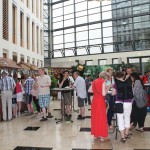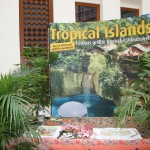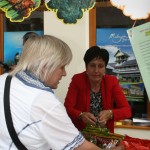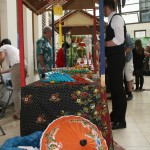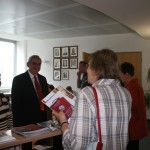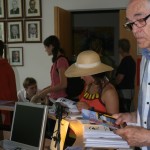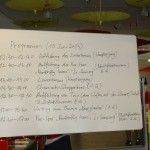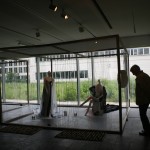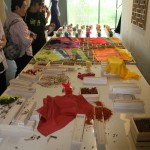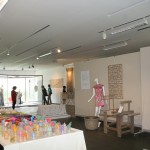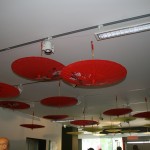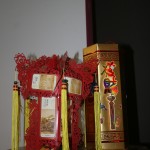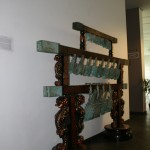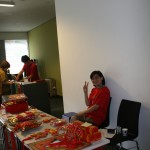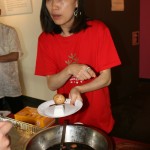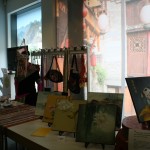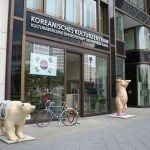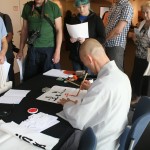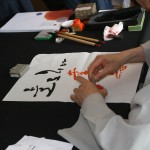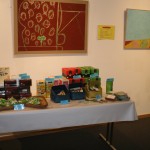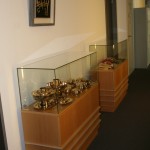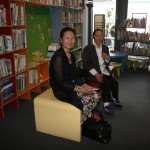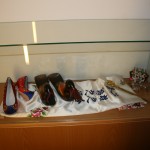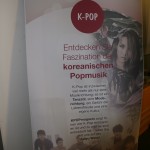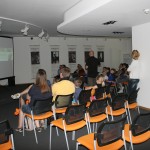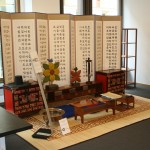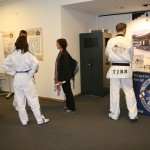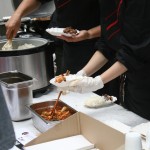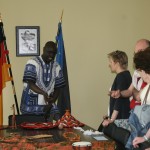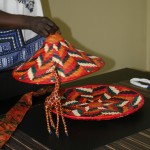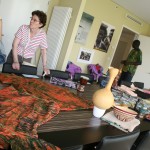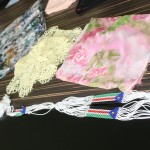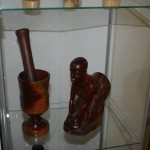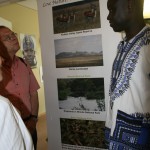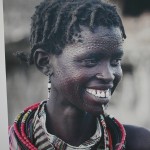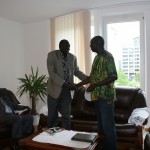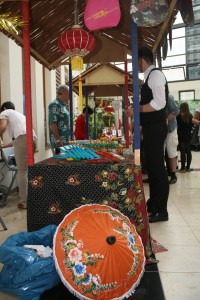
On June 15th Berlin had the honor of hosting a unique annual event, taking place in several embassies around the city: All Nations Festival 2013. The idea of the festival is to open the doors of different embassies and cultural institutions to visitors for a day, once a year, and present ethnic and cultural customs of various countries to all those interested in diversity and multiculturalism. At their first visit to one of the embassies, all visitors receive an All Nations Passport, which is stamped at all the participating institutions they go to that day. The whole experience is thus closely related to travelling––one could feel as if one had gone to a dozen countries in just one day by going to the institutions that display their respective countries’ ethnic and national marks. The event is also usually assigned a theme each year––this year’s theme was Aberglaube, or Superstitions.
Ideally, the eighteen participating institutions this year (Afghanistan, Ethiopia, Bolivia, Chinese Cultural Center, Guinea-Bissau, Indonesia, Iraq, Yemen, Korean Cultural Center, Malawi, Malaysia, Malta, Nepal, Palestinian Mission, South Sudan, Chad, Venezuela, Konrad-Adenauer-Stiftung) would have prepared something in the light of the theme, e.g. whether Friday 13 really is an unlucky day in different countries, or how myths influence superstition. However, the six embassies and cultural centers I went to––of Malaysia, Malta, South Sudan, China, and Korea, and the Konrad-Adenauer Stiftung – mostly focused on presenting their general national peculiarities in the form of traditional clothing, food, art and crafts. Nonetheless, even without closely sticking to the assigned theme, the All Nations Festival was an extremely interesting, diverse, and colorful experience!
If you would have liked to know why Korean tea is so well-known amongst tea experts, how your name would look written in calligraphy, where the natural pigments in China come from, how the South Sudanese indulge in food, or why Malaysia is the new top-choice for summer travels––the All Nations Festival was a place for you!
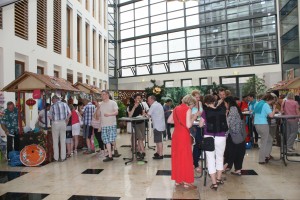
Some of my experiences that day really left a lasting impression on me and I feel like I have learnt quite a bit more about some countries I only had a blurred image of in my head. The first embassy I visited was the Malaysian. I can still vividly remember the lively music, creative jewelry, colorful costumes, and the smell of spicy food in the main hall. Malaysia wanted to follow the annual theme, to some extent at least––thus I received a small collection of their national myths at the information desk, along with all the touristic offerings of the country. I learned that Malaysia is a quite vegetarian-friendly country, and given its cheerful music and very rich culture, it’s more than enough for me, as a travel-loving vegetarian, to put on my ‘Places To Visit’ list. The Malaysian Embassy was, indeed, a perfectly intense and rich-in-impressions start of my day’s journey through the different customs in the worldwide-scattered countries.

Another culture left quite an imprint on my long-lasting memory. The great and powerful country of China, as usual, went big in representing its long tradition and culture at the Chinese Cultural Center. Traditional wear, displayed in a huge room with admiring visitors all around the glass-protected exhibits, national ‘good luck’ cake made of rice and filled with a mysterious cream––rich in both taste and effect, musical instruments, astonishing art works, various natural pigments for clothing, and an always-ready-to-smile-and-pose-for-a-picture Chinese woman, only briefly summarize the intense feeling of being in the People’s Republic of China during the hour of my visit, whilst only actually seeing a fragment of it in the heart of Berlin.
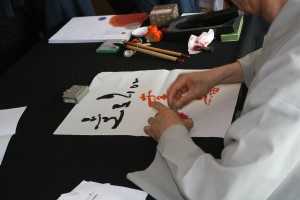
My further interesting discoveries happened at Potsdamer Platz, where the Korean Cultural Center and the Embassy of South Sudan are situated. The Koreans offered a range of cultural experience for their visitors, from a calligraphy stand and substantial tea collection, to an outdoor Korean food and socializing experience. There was something organized for all age groups: high school youngsters could go to a small room and listen to Korean pop music and watch accompanying music videos. And I must say––it was quite a popular place, as many young people seemed fascinated with the Korean tunes when I was passing by. The calligraphy stand was also quite popular––with a long line of people waiting for their name to be written in calligraphic letters. Leaving the Korean Cultural Center was not easy, but the closing time of the program was approaching and I had one more newly-founded country next door, I very much wanted to curiously roam through…
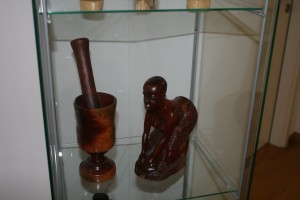
The Embassy of the small and new country––South Sudan––prepared quite a rich, despite its small scope, program to illuminate the offerings of this African country. They even assigned two South-Sudanese guides to lead the visitors through the embassy’s chambers, which was something I had not encountered in my previous visits that day! Posters of their national parks, traditional wear, handwork and inhabitants, together with the exhibits of handmade jewelry and pottery, gave me a very picturesque experience of this nowadays often-disregarded state. A friendly guide dressed in a pattern-rich green national costume led me through the story of South Sudan. He showed me beautiful crafts, made by their women, described the stories behind the objects exhibited in the Embassy, and led me to the ambassador’s office that was occupied by two men having a relaxing Saturday South-Sudanese chat. I could feel the hospitality and the friendliness of the culture there––from honest smiles and my guide’s readiness to introduce me to his countrymen, to the only fully-charge-free snacks I encountered that day. In the end, South Sudan’s openness and friendliness served as the most suiting closure of my day, full of wanderings, marvelous sights, and exciting experiences.
I find the All Nations Festival 2013 to have been altogether quite a successful endeavor. Events like these offer an opportunity for national voices, not so well-known in our Western culture, to be heard––such as the one I encountered in South Sudan––which surprised me with its tradition-abundant content even more than I ever would have thought. This festival is an ideal place to go to for all of us, world-and-life wanderers, always curious and eager to learn more about places, people, and cultures. It is an experience I profoundly treasure and hope to repeat next year––one, whose potential will hopefully be recognized even further by all of you who are now reading about it.
Photo gallery:

